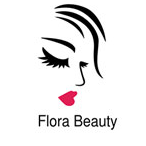What is cupping?
Cupping is a type of alternative therapy that originated in China. It involves placing cups on the skin to create suction. The suction may facilitate healing with blood flow.
Proponents also claim the suction helps facilitate the flow of “qi” in the body. Qi is a Chinese word meaning life force. A famous Taoist alchemist and herbalist, Ge Hong, reportedly first practiced cupping. He lived from A.D. 281 to 341.
Many Taoists believe that cupping helps balance yin and yang, or the negative and positive, within the body. Restoring balance between these two extremes is thought to help with the body’s resistance to pathogens as well as its ability to increase blood flow and reduce pain.
Cupping increases blood circulation to the area where the cups are placed. This may relieve muscle tension, which can improve overall blood flow and promote cell repair. It may also help form new connective tissues and create new blood vessels in the tissue.

What are the different types of cupping?
Cupping was originally performed using animal horns. Later, the “cups” were made from bamboo and then ceramic. The suction was primarily created through the use of heat. The cups were originally heated with fire and then applied to the skin. As they cooled, the cups drew the skin inside.
Modern cupping is often performed using glass cups that are rounded like balls and open on one end.
There are three main categories of cupping performed today:
• Dry cupping is a suction-only method.
*. Fire cupping
• Wet cupping or cupping Hijama is involve both suction and controlled medicinal bleeding.
What is Dry Cupping ?
Cupping therapy is a traditional Chinese and Middle Eastern practice that people use to treat a variety of conditions.
It involves placing cups at certain points on a person’s skin. A practitioner creates suction in the cups, which pulls against a person’s skin.
Cupping typically leaves round bruises on a person’s skin, where their blood vessels burst after exposure to the procedure’s suction effects.
According to a study paper in the journal PLoS One
Trusted Source
, cupping practitioners claim that it works by creating hyperemia or hemostasis around a person’s skin. This means that it either increases or decreases a person’s blood flow under the cups.
Cupping also has links to acupoints on a person’s body, which are central to the practice of acupuncture.
Many doctors consider cupping therapy a complementary therapy, which means that many do not recognize it as part of Western medicine.
What is Fire cupping ?
The practitioner uses glass cups and flames to create suction; they place the cups on certain parts of the body, depending on what the desired results are, and may slide some of the cups around. They’re left on for a brief period of time, then released. The procedure is relatively quick; I believe mine was a little under 30 minutes in total.
Looking for cupping service? Why do not try our excellent cupping service?
What Are the Benefits?
According to Tiffany, there are TONS of reasons to try cupping, including:
• Pain relief
• Improved range of motion
• Reduced inflammation
• Treats sports injuries
• Can boost immunity when you’re sick
• “Can relieve a cold immediately”
• Stress relief through “aiding the peripheral nervous system and stimulating the parasympathetic nervous system”
• Brings body to homeostasis
• Allows body to function and heal on its own
What is Wet cupping (Hijama)?
Please see our another article (What is hijama?)
Side Effects
Cupping is fairly safe, as long as you go to a trained health professional. But you could have these side effects in the area where the cups touch your skin:
- Mild discomfort or itching
- Bruises
- Skin infection which is extremely rare
Also Cupping therapy isn’t recommended for everyone. Extra caution should be taken for the following groups:
- Children. Children under 4 years old shouldn’t receive cupping therapy. Older children should only be treated for very short periods.
- Seniors. Our skin becomes more fragile as we age. Any medication you may be taking might have an effect as well.
- Pregnant people. Avoid cupping the abdomen and lower back.
- Those who are currently menstruating.
Don’t use cupping if you use blood-thinning medication. Also avoid cupping if you have:
- a sunburn
- a wound
- a skin ulcer
- experienced recent trauma
- an internal organ disorder
Sources:
https://www.webmd.com/balance/guide/cupping-therapy#1
https://www.healthline.com/health/cupping-therapy
https://muslimvillage.com/2018/09/08/119678/benefits-cupping-hijama/
https://www.popsugar.co.uk/fitness/What-Fire-Cupping-44487189

